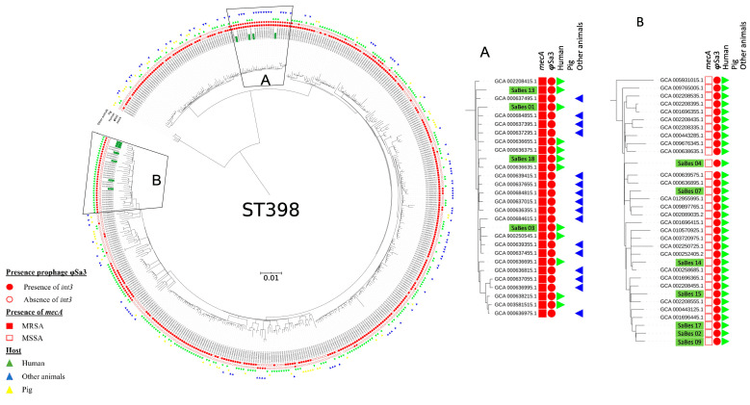Genome Analysis of Methicillin-Resistant and Methicillin-Susceptible Staphylococcus aureus ST398 Strains Isolated from Patients with Invasive Infection
ABSTRACT
BACKGROUND
Using genomic data, we determined the origin of MRSA ST398 isolates responsible for invasive infection in patients with no known livestock contact.
METHODS
We sequenced the genome of seven MSSA and four MRSA ST398 isolates from patients with invasive infections between 2013 and 2017, using the Illumina technique. Prophage-associated virulence genes and resistance genes were identified. To determine the origin of the isolates, their genome sequences were included in phylogenetic analysis also encompassing the ST398 genomes available on NCBI.
RESULTS
All isolates carried the ϕSa3 prophage, but with variations in the immune evasion cluster: type C in MRSA isolates, and type B in MSSA isolates. All MSSA belonged to the spa type t1451. MRSA strains had the same SCCmec type IVa (2B) cassette and belonged to spa types t899, t4132, t1939 and t2922. All MRSA harbored the tetracycline resistance gene, tet(M). Phylogenetic analysis revealed that MSSA isolates belonged to a cluster of human-associated isolates, while MRSA isolates belonged to a cluster containing livestock-associated MRSA.
CONCLUSION
We showed that the clinical isolates MRSA and MSSA ST398 have different origins. An acquisition of virulence genes by livestock-associated MRSA isolates allows them to induce an invasive infection in human.
